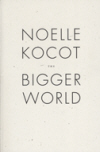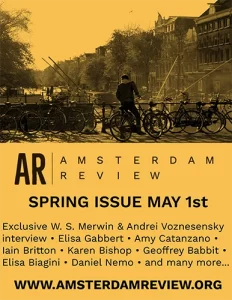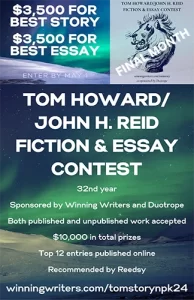The Bigger World
In The Bigger World, the reader is presented with the “character poems of Noelle Kocot,” as noted on the title page. And each poem does present a new character or two and a glimpse of their lives. The poems, written always as a single stanza, read like fables or fairy tales with their fantastic elements—whether it is Horatia giving birth to a fully grown man, a phoenix talking to a monk, the head of a woman becoming a house plant, or a wing-faced dentist who used to love war—and with their seemingly moralizing messages. At the end of “Rainbow Lanes,” Kocot writes:
In The Bigger World, the reader is presented with the “character poems of Noelle Kocot,” as noted on the title page. And each poem does present a new character or two and a glimpse of their lives. The poems, written always as a single stanza, read like fables or fairy tales with their fantastic elements—whether it is Horatia giving birth to a fully grown man, a phoenix talking to a monk, the head of a woman becoming a house plant, or a wing-faced dentist who used to love war—and with their seemingly moralizing messages. At the end of “Rainbow Lanes,” Kocot writes:
The remedial darkness fell.
Saskia was afraid to look outside.
So instead she looked into the void,
And there were rose petals.
Quite a few of the characters in this collection seem to be looking into the void and discovering, if not rose petals, than acceptance of things as they are. “Welcome Mat” concludes, “All was right with the world.” In “Homage,” an unnamed she admires an unnamed he, in whom she sees “the will to truth.” Often, in the world of these poems, this search for truth results in recognizing limitations. The opening poem, “God Bless the Child,” ends with the characters, Horatia and her son, finding a sort of acceptance:
Horatia felt at peace, finally, after so
Many years of bottled-up hatred
And fear. She and her son walked
Silently on, not out of the flames
Or anything, but just walked on.
They may not be walking out of the flames, but they are walking on, perhaps “freed / From the demon of grief,” as the sleeper is in “Fourth of July.” This zen-like acceptance is found again in “Red-Eye,” which ends:
…They kicked a
Red ball back and forth for hours
Until Molly was exhausted.
And so she went back home,
A song lingering, an agony
Played backwards, superimposed
Upon her, and she looked in
The mirror for signs of anguish,
And, not finding anything, she slept.
While this seems to be a predominant theme, things do not turn out so well for all the characters. In “True Story,” Millie winds up being torn to shreds, and “The Last Time She Saw Him” is about a father who attempts to abduct his child. This tale does not end pleasantly:
She wanted to tell him just one
More thing before the police
Took him. It was that she wanted
Something of his for comfort when
She slept, maybe a sweater she could
Wear and unravel ten years later
And tie into a net before he thudded
Onto the gray littered street from a hotel.
Instead she became a mute six-
Year-old stepping from the porch
Onto midair, not knowing if anyone
Would be there to catch her
If she ever happened to land.
With the use of all the names, the more macabre moments recall Edward Gorey, but the lighter or more playful poems recall Amanda Nadelberg’s character poems from Isa the Truck Named Isadore.
In The Bigger World, we’re reminded again and again that there is a bigger world that exists outside of these individual lives. This collection makes for a quick read, but a number of the poems are worth revisiting in order to let their moments of beauty, or their moments of horror, sink in.





